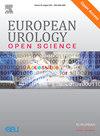泌尿外科新型多端口机器人平台的围手术期、肿瘤和功能结果:系统回顾和荟萃分析
IF 3.2
3区 医学
Q1 UROLOGY & NEPHROLOGY
引用次数: 0
摘要
背景与目的机器人辅助手术(RAS)在泌尿外科中越来越普遍。达芬奇多端口手术机器人(DVM-SR)继续引领该领域。近年来,新型多端口手术机器人(NM-SRs)已被引入市场;然而,它们的安全性和有效性仍未得到评估。本研究旨在对NM-SRs的围手术期、肿瘤和功能结果进行综合评估,并与DVM-SR进行比较。方法系统检索PubMed、Scopus、Web of Science、Embase和clinicaltrial.gov,以确定在泌尿外科大手术中评估NM-SRs的研究,评估围手术期、功能和肿瘤终点。对nm - sr和DVM-SR的安全性、功能和肿瘤结果进行了荟萃分析。主要发现和局限性本综述纳入了74项研究,涉及5487例患者。研究了9个平台:Hinotori、Hugo RAS、revoi、Versius、Avatera、senance、KangDuo Surgical Robot-01、Dexter和Toumai。nm - sr用于机器人辅助根治性前列腺切除术(RARP;41项研究),部分肾切除术(RAPN;14项研究),根治性肾切除术(RARN;4项研究)、肾上腺切除术(4项研究)、肾输尿管切除术(2项研究)、RARN和血栓切除术(1项研究)、阴道固定术(4项研究)、肾盂成形术(7项研究)、单纯肾切除术(4项研究)、单纯前列腺切除术(3项研究)和输尿管手术(4项研究)。仅在病例报告中描述了纳米- srs膀胱切除术,并将其排除在外。NM-SRs和DVM-SR之间的比较分析显示出类似的结果在术中并发症SATAVA等级≥2(比值比(或)0.89,95%可信区间[CI] 0.25, 3.1, p = 0.9 RARP或0.59,95% CI 0.11, 3.3, p = 0.5 RAPN),术后并发症高档(Clavien-Dindo≥iii a,或0.85,95% CI 0.4, 2, p = 0.7 RARP或0.59,95% CI 0.1, 3.3, p = 0.6 RAPN),和积极的外科利润率(或0.90,95% CI 0.72, 1.1,RARP p = 0.3, OR = 1.65, 95% CI 0.3, 9.1, RAPN p = 0.6)。对于接受RARP的患者,3个月生化复发率和尿失禁率具有可比性(OR分别为0.99 [95% CI 0.5, 1.8, p = 1]和OR 0.99 [95% CI 0.77, 1.3, p = 0.9])。在纳入的NM-SRs和DVM-SR研究中,RAPN的三连效似乎相似(OR 1.3, 95% CI 0.4, 4.4, p = 0.7)。纳入研究的小样本量和结果的初步性质是主要的局限性。结论和临床意义与DVM-SR相比,nm - sr在大多数良性和恶性疾病的手术中可能提供相似的安全性、肿瘤和功能预后。鉴于有希望的初步发现,需要进一步的研究来探索纳米纳米固体燃料的潜力。与达芬奇手术机器人系统相比,新型多端口手术机器人(NM-SRs)似乎安全有效。然而,需要进一步的研究来彻底评估它们的长期效果和成本效益。纳米- srs代表了在全球范围内推广机器人辅助手术的机会。本文章由计算机程序翻译,如有差异,请以英文原文为准。
Perioperative, Oncological, and Functional Outcomes of New Multiport Robotic Platforms in Urology: A Systematic Review and Meta-analysis
Background and objective
Robot-assisted surgery (RAS) has steadily become more prevalent in urology. The Da Vinci multiport surgical robot (DVM-SR) continues to lead the field. In recent years, new multiport surgical robots (NM-SRs) have been introduced to the market; however, their safety and efficacy remain unassessed. This study aims to give a comprehensive evaluation of the perioperative, oncological, and functional outcomes of NM-SRs and a comparison with the DVM-SR.
Methods
A systematic search was performed in PubMed, Scopus, Web of Science, Embase, and clinicaltrial.gov to identify studies that evaluate NM-SRs in major urological surgeries assessing perioperative, functional, and oncological endpoints. A meta-analysis was performed comparing NM-SRs with the DVM-SR for safety, and functional and oncological outcomes.
Key findings and limitations
Seventy-four studies involving 5487 patients were included in the review. Nine platforms were studied: Hinotori, Hugo RAS, Revo-I, Versius, Avatera, Senhance, KangDuo Surgical Robot-01, Dexter, and Toumai. NM-SRs were used to perform robot-assisted radical prostatectomy (RARP; 41 studies), partial nephrectomy (RAPN; 14 studies), radical nephrectomy (RARN; four studies), adrenalectomy (four studies), nephroureterectomy (two studies), RARN and thrombectomy (one study), colpopexy (four studies), pyeloplasty (seven studies), simple nephrectomy (four studies), simple prostatectomy (three studies), and ureteral surgery (four studies). Cystectomies with NM-SRs were described only in case reports and were excluded. The comparative analysis between NM-SRs and the DVM-SR showed similar outcomes in terms of intraoperative SATAVA grade ≥2 complications (odds ratio [OR] 0.89, 95% confidence interval [CI] 0.25, 3.1, p = 0.9 for RARP and OR 0.59, 95% CI 0.11, 3.3, p = 0.5 for RAPN), postoperative high-grade complications (Clavien-Dindo ≥IIIa, OR 0.85, 95% CI 0.4, 2, p = 0.7 for RARP and OR 0.59, 95% CI 0.1, 3.3, p = 0.6 for RAPN), and positive surgical margins (OR 0.90, 95% CI 0.72, 1.1, p = 0.3 for RARP and OR 1.65, 95% CI 0.3, 9.1, p = 0.6 for RAPN). For patients undergoing RARP, biochemical recurrence and urinary continence rates at 3 mo were comparable (OR 0.99 [95% CI 0.5, 1.8, p = 1] and OR 0.99 [95% CI 0.77, 1.3, p = 0.9], respectively). The achievement of the trifecta for RAPN appeared to be similar between the included studies on NM-SRs and the DVM-SR (OR 1.3, 95% CI 0.4, 4.4, p = 0.7). The small sample size of the included studies and the preliminary nature of the results represent the major limitations.
Conclusions and clinical implications
When compared with the DVM-SR, NM-SRs may offer similar safety, and oncological and functional outcomes across most surgeries for both benign and malignant diseases. Further research is needed to explore the potential of NM-SRs, given the promising initial findings.
Patient summary
New multiport surgical robots (NM-SRs) appear to be safe and effective compared with the Da Vinci surgical robotic system. However, further research is required to thoroughly assess their long-term outcomes and cost effectiveness. NM-SRs represent an opportunity to spread the use of robot-assisted surgery globally.
求助全文
通过发布文献求助,成功后即可免费获取论文全文。
去求助
来源期刊

European Urology Open Science
UROLOGY & NEPHROLOGY-
CiteScore
3.40
自引率
4.00%
发文量
1183
审稿时长
49 days
 求助内容:
求助内容: 应助结果提醒方式:
应助结果提醒方式:


